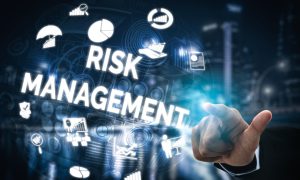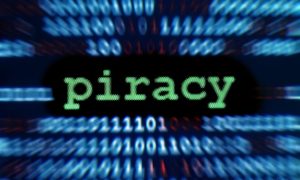The hiring landscape has changed dramatically in recent years. Companies are now facing challenges in finding qualified candidates in a competitive market. I will show you exactly how artificial intelligence can transform your recruitment efforts. Throughout this article, we’ll cover everything from AI chatbots to predictive analytics and how these technologies can save you time and money while improving the quality of your hires. So, let’s break down the nuts and bolts of AI integration in recruitment.
Chatbots Drive Hiring Speed
You know what kills the candidate experience? Waiting. Endless waiting for responses about applications. Companies lose exceptional talent simply because they take too long to communicate.
AI-powered chatbots have completely changed this game. They respond to candidates 24/7, answer common questions about the role, and schedule interviews automatically. One of my clients implemented chatbots last year and saw their time-to-hire drop by 37%. That’s massive!
The real magic happens when candidates feel heard. These aren’t your basic chatbots from five years ago. Today’s AI assistants use natural language processing to have actual conversations. They can collect preliminary information, screen candidates based on basic qualifications, and keep applicants engaged. This human-like interaction maintains momentum without requiring your recruiting team to work around the clock.
Diversity and Inclusion Enhancement

Human bias is real and can affect hiring outcomes. We all have unconscious biases that affect our decisions, no matter how fair we try to be.
AI tools are changing this narrative by focusing purely on skills and qualifications. They screen resumes without seeing names, photos, or other identifying information that might trigger bias. The results speak for themselves. Companies using AI for candidate screening have seen up to 35% more diverse shortlists.
But here’s where it gets interesting. Advanced AI doesn’t just remove information—it actively looks for patterns of success across different backgrounds. It might be noticed that candidates from non-traditional educational paths excel in specific roles at your company. These insights help you tap into talent pools you might have overlooked before.
Remember, though, AI systems learn from historical data. If your past hiring was biased, your AI might perpetuate those patterns. Constantly audit your algorithms regularly to ensure they promote inclusion rather than limit it.
AI-Driven Candidate Sourcing and Matching
Finding candidates used to mean posting on job boards and praying. Those days are gone. AI sourcing tools are now scanning millions of profiles across the internet to find candidates who match the basic requirements and the subtle qualities that make someone successful in your specific company culture.
These tools look at far more than keywords. They analyze career progression, project descriptions, and writing style to determine potential fit. The best part? They constantly learn which candidates succeed in your organization, refining their matches over time.
My favorite approach combines AI sourcing with predictive matching. The system doesn’t just find candidates—it ranks them based on likelihood of success, retention potential, and growth trajectory within your company. This targeted approach means you’re interviewing candidates who aren’t just qualified on paper but are genuinely likely to thrive in your environment.
New Hire Retention Strategies
AI is now helping predict which candidates are likely to stay long-term based on patterns from your existing workforce.
These systems analyze factors like commute distance, career growth opportunities, and alignment with company values. They can flag potential retention risks during the hiring process, allowing you to address concerns proactively or focus on candidates with higher staying power.
Some cutting-edge companies use AI to personalize the onboarding experience based on individual learning styles and career aspirations. The technology creates customized development plans from day one, significantly boosting engagement and loyalty. Employees who feel their growth is prioritized are likelier to stick around.
Advanced, AI-Powered Talent Analytics
AI talent analytics give you unprecedented visibility into your hiring process, highlighting bottlenecks and inefficiencies you never knew existed.
I worked with a tech company that discovered their most successful engineers were dropping out at the technical assessment stage. The AI flagged unusual patterns in their quiz performance that didn’t correlate with on-the-job success. After revamping their technical evaluation, they saw a 28% increase in quality hires.
The best AI analytics platforms provide real-time dashboards showing key metrics like time-to-hire, cost-per-hire, and quality-of-hire across different departments and positions. They also offer predictive insights, like forecasting upcoming hiring needs based on growth projections and historical turnover patterns.
Streamlined Onboarding Process
The gap between accepting an offer and becoming productive is costly. AI is dramatically shortening this period through intelligent onboarding systems.
These platforms customize the onboarding journey based on role, experience level, and learning style. New hires receive precisely the information they need when they need it. AI chatbots answer common questions instantly, eliminating the frustration of waiting for HR responses.
Virtual assistants guide new employees through paperwork, policy reviews, and training modules, tracking progress and adapting content based on comprehension levels. Some systems connect new hires with ideal mentors based on personality matching and career goals.
The result? Employees reach productivity faster and feel more connected to your organization from day one. Companies using AI-powered onboarding report new hires reaching full productivity up to 34% faster than traditional methods.
Predictive Analytics for Talent Acquisition
Predictive analytics in recruitment is about anticipating tomorrow’s needs, not just filling today’s openings.
These systems analyze internal data (turnover rates, growth projections, retirement eligibility) alongside external factors (market trends, competitor hiring, economic indicators) to forecast your talent needs months or even years in advance. This foresight allows you to build talent pipelines before emergencies hit.
Advanced predictive models can even recommend when to hire for specific roles based on ramp-up time and projected business demands. They identify the most valuable skills in the coming years, helping you shape job descriptions and development programs accordingly.
My clients who implement predictive talent analytics consistently outperform their competitors in securing top talent. They’re not scrambling to fill positions—they’re methodically building relationships with ideal candidates long before they need to make an offer.
Nonstop Learning and Development
Machine learning algorithms track performance metrics, identify skill gaps, and recommend personalized learning paths. They can predict which employees are ready for advancement and which might need additional support to reach their potential.
These systems connect learning directly to business outcomes, showing the ROI of development initiatives in real-time. They also identify emerging skills gaps across your organization, allowing you to address them before they impact performance.
Forward-thinking companies use AI to create “talent marketplaces” where internal projects are matched with employees looking to develop specific skills. This approach improves engagement while building capabilities that are aligned with business needs.
How AI & Automation Enhance the Recruitment Process
When implemented thoughtfully, AI transforms recruitment from a reactive scramble to a strategic advantage. Here’s how:
Delivers the Best Candidate Matches
Traditional keyword matching often misses great candidates who describe their experience differently. AI understands semantic relationships between terms, identifying talent who might use different terminology but possess the exact skills you need.
These systems also recognize potential beyond the resume, identifying candidates who might not check every box but show patterns indicating high potential. The algorithms continuously improve their understanding of what “good” looks like for your company and roles.
Removes Human Bias

AI doesn’t care about a candidate’s name, gender, age, or school—unless you program it to. It evaluates purely on relevant qualifications and potential for success.
The best systems go beyond removing bias. They actively promote diversity by ensuring that job descriptions use inclusive language and that qualified candidates from all backgrounds receive equal consideration.
Saves Money
The numbers don’t lie. Companies implementing AI in recruitment report:
- 20-30% reduction in time-to-hire
- 15-25% decrease in cost-per-hire
- Up to 40% improvement in retention rates
These efficiencies come from automating repetitive tasks, improving candidate quality, and reducing turnover. Your recruiting team spends less time screening resumes and more time building relationships with top candidates.
Conclusion
AI isn’t replacing recruiters—it’s empowering them to work smarter. Artificial intelligence allows your team to focus on the human side of hiring by automating repetitive tasks, eliminating bias, and providing data-driven insights.
The future belongs to companies that strategically blend technology with human expertise. AI handles the heavy lifting of sourcing, screening, and analytics, while your team builds relationships, assesses cultural fit, and sells your company vision.
Start by implementing one AI tool to address your most significant pain point. Measure the results, refine your approach, and gradually expand your AI toolkit. Remember, the goal isn’t to remove humans from the process—it’s to make your human recruiters superpowered through intelligent technology.
ALSO READ: What are the Important Steps After False Allegations of Molestation?
FAQs
AI tools augment human capabilities by handling repetitive tasks and providing insights while recruiters focus on relationship building and final decisions.
Many AI tools offer scalable pricing based on hiring volume, making them accessible to companies of all sizes.
Reputable AI recruitment platforms comply with data protection regulations and anonymize candidate information.
AI can significantly reduce bias, but careful implementation and regular auditing are required to ensure algorithms don’t perpetuate existing biases.
Most companies see measurable improvements within 3-6 months, with full ROI typically achieved within a year.




